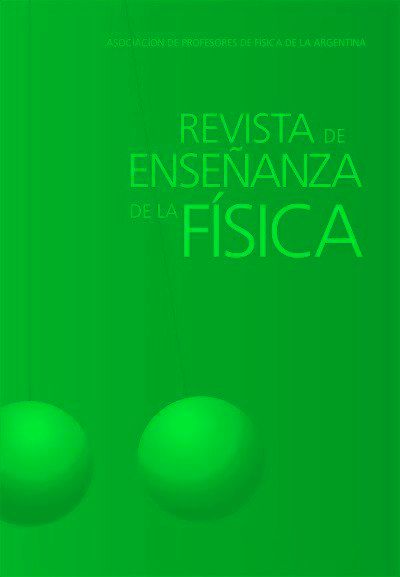The study of electrical installations: an analysis in light of Gardner's multiple intelligences
DOI:
https://doi.org/10.55767/2451.6007.v33.n2.35290Keywords:
Electrical circuits, Physics Teaching, Multiple Intelligences, Maker Education, Scale ModelAbstract
This article presents an experience report about practical activities that addressed the topic of electrical wiring in high school. The
activities were part of a larger qualitative research on methodological pluralism and multiple intelligences in the teaching of electrical
circuits. Thus, in addition to sharing the proposal, this work aims to understand the potential of activities in stimulating different intelligences and in increasing students' motivation and leadership. Approximately 30 high school students from a public school in Porto
Alegre, Rio Grande do Sul, Brazil, participated in the research. The data were obtained through observations, audio recording and photographic records. As a method of analysis, we opted for the Discursive Textual Analysis. Due to the nature of the activity, it was observed that the proposal stimulated the use of skills that are often not explored in traditional education. The analysis suggests that at
least three intelligences were stimulated during activities (spatial, bodily-kinesthetic and interpersonal). Finally, there was also a great
involvement and motivation of students with the activity, reinforcing the importance of continuing the search for a more active, collaborative and meaningful education.
References
Ausubel, D. P. (2003). Aquisição e retenção de conhecimentos: uma perspectiva cognitiva. Lisboa: Plátano.
Armstrong, T. J. (2001). Inteligências múltiplas na sala de aula. Porto Alegre: Artmed.
Blikstein, P. (2013). Digital fabrication and ‘making’ in education: The democratization of invention. In Walter-Herrmann, J., Büching, C. (Eds.), FabLabs: Of machines, makers and inventors. Bielefeld: Transcript Publishers.
Delizoicov, D., Angotti, J. A. & Pernambuco, M. M. (2009). Ensino De Ciências: Fundamentos e Métodos. 3 ed. São Paulo: Cortez.
Demo, P. (2015). Aula não é necessariamente aprendizagem. Revista Ensaio: Avaliação e Políticas Públicas em Educação, 12(43), 669-695.
Gardner, H. (1993). Frames of Mind: The Theory of Multiple Intelligences. 2 ed. Nova Iorque: Basic.
Gardner, H. (2001). Inteligência um conceito reformulado: O criador da teoria de inteligências múltiplas explica e expande suas ideias com enfoque no século XXI. Rio de Janeiro: Objetiva.
Halverson, E. R., & Sheridan, K. (2014). The maker movement in education. Harvard educational review, 84(4), 495-504.
Laburú, C. E., Arruda, S. M. & Nardi, R. (2003). Pluralismo Metodológico No Ensino De Ciências. Ciência & Educação, 9(2), 247-260.
Martinez, S., & Stager, G. S. (2014). The maker movement: A learning revolution. Learning & Leading with Technology, 41(7), 12-17.
Moraes, J. U. P. & Araújo, M. S. T. (2012). O Ensino de Física e o Enfoque CTSA: caminhos para uma educação cidadã. 1 ed. São Paulo: Editora Livraria da Física.
Moraes, R. & Galiazzi, M. C. (2016). Análise Textual Discursiva. Ijuí: Unijuí.
Ortiz, G. S. & Denardin, L. (2019). O Pluralismo Metodológico e as Inteligências Múltiplas no Ensino de Circuitos Elétricos. Acta Scientiae, 21(5), 2-27.
Paula, B. B., Oliveira, T. & Martins, C. B. (2019). Análise do Uso da Cultura Maker em Contextos Educacionais: Revisão Sistemática da Literatura. RENOTE-Revista Novas Tecnologias na Educação, 17(3).
Peppler, K., & Bender, S. (2013). Maker movement spreads innovation one project at a time. Phi Delta Kappan, 95(3), 22-27
Downloads
Published
Issue
Section
License
Copyright (c) 2021 Gabriel Santos Ortiz, Luciano Denardin

This work is licensed under a Creative Commons Attribution-NonCommercial-NoDerivatives 4.0 International License.
Aquellos autores/as que tengan publicaciones con esta revista, aceptan los términos siguientes:Los autores/as conservarán sus derechos de copiar y redistribuir el material, bajo los términos estipulados en la Licencia de reconocimiento, no comercial, sin obras derivadas de Creative Commons que permite a terceros compartir la obra bajo las siguientes condiciones:
- Reconocimiento — Debe reconocer adecuadamente la autoría, proporcionar un enlace a la licencia e indicar si se han realizado cambios. Puede hacerlo de cualquier manera razonable, pero no de una manera que sugiera que tiene el apoyo del licenciador o lo recibe por el uso que hace.
- NoComercial — No puede utilizar el material para una finalidad comercial.
- SinObraDerivada — Si remezcla, transforma o crea a partir del material, no puede difundir el material modificado.
- Los autores/as podrán adoptar otros acuerdos de licencia no exclusiva de distribución de la versión de la obra publicada (p. ej.: depositarla en un archivo telemático institucional o publicarla en un volumen monográfico) siempre que se indique la publicación inicial en esta revista.
- Se permite y recomienda a los autores/as difundir su obra a través de Internet (p. ej.: en archivos telemáticos institucionales o en su página web) antes y durante el proceso de envío, lo cual puede producir intercambios interesantes y aumentar las citas de la obra publicada. (Véase El efecto del acceso abierto).










